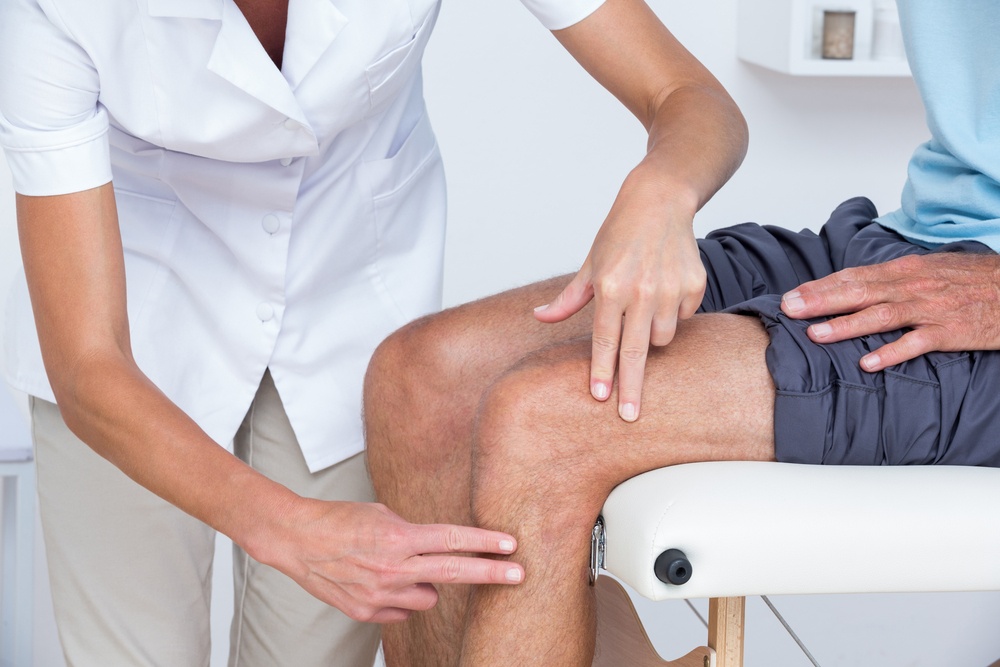It occurs nearly every day in the office. There is almost always someone that I have to inform that they have the degenerative disease: Knee Osteoarthritis. It sounds like such a scary diagnosis to a patient. Many patients, when they hear this, feel that this is the beginning of getting old or the start of a life time of pain. This all is not necessarily the case.
The incidence of symptomatic knee arthritis is approximately 240 people per 100,000 per year. That is a staggering number, but not all these patients are elderly, and not all these patients require surgery. In fact, very many of these are young and active. Many of these patients have years of work and responsibilities ahead of them and they cannot stop their lives.
Orthopedic surgeons, physiatrists, and physical therapists have been battling osteoarthritis for years. Most recently, a more evolved understanding has occurred and I would like to share it with you. Technically, osteoarthritis is a degenerative disease that causes the loss of articular cartilage (the lining of the bones within a joint). Risk factors include a labor intensive occupation (such as repetitive bending), muscle weakness and heavy body weight. In addition, a link has been discovered between a metabolic syndrome that includes obesity, high triglycerides, high blood pressure and elevated glucose levels.
The actual dynamic cause of the loss in the articular cartilage lining has become better understood. It is evident, now, that the true mechanical cause and beginning is the knee joint’s lost ability to withstand the load of the body. Much like a load on a heavy branch, eventually, the biomechanical load of the body can become too much and that sparks the events that progress to osteoarthritis of the knee. Protein enzymes (called MMP’s) begin to digest the cartilage matrix. The meniscus (a cartilage cushion between the bones responsible for protecting the articular cartilage) loses its elastic properties and often tears spontaneously. The articular cartilage wears away and symptoms progress.
Patients develop pain that may lead to limited function. Often the pain is at rest or at night. Swelling develops with activity. Stiffness progresses and, sometimes, patients may feel locking or buckling from the fragmented cartilage.
Now, this does not always and only occur in the older patient. In fact, early knee osteoarthritis in younger patients is very common and is one of the biggest angsts for Orthopedic Surgery Sports Medicine specialists. These are not patients that should be rushed into knee replacement surgery. Therefore, initial conservative treatment options include:
- Non-steroidal anti-inflammatory medications
- Rehabilitation (physical therapy)
- Weight loss (if needed): diet and low impact aerobic exercises
- Viscoelastic (Lubricant) Injections
- Cortisone Injections
- Glucosamine supplements
- Braces
Subsequently, if symptoms cannot be controlled with conservative management then surgery may be required. Surgery options include arthroscopic surgery (if there is locking, buckling or failed physical therapy), partial knee replacements and full knee replacements. Of course, the younger the patient is the more we try to minimize the extent of the surgery.
Yes, younger people also get knee osteoarthritis and it can be a daunting diagnosis to get. Nonetheless, studies have shown that these patients benefit from access to information and education regarding the objectives of treatment. In addition, the patient should be aware of the importance of lifestyle changes, exercises, weight control, and a measured level of activities.
Osteoarthritis of the knee is a constant subject of research and efforts are constant to pursue its cure.




